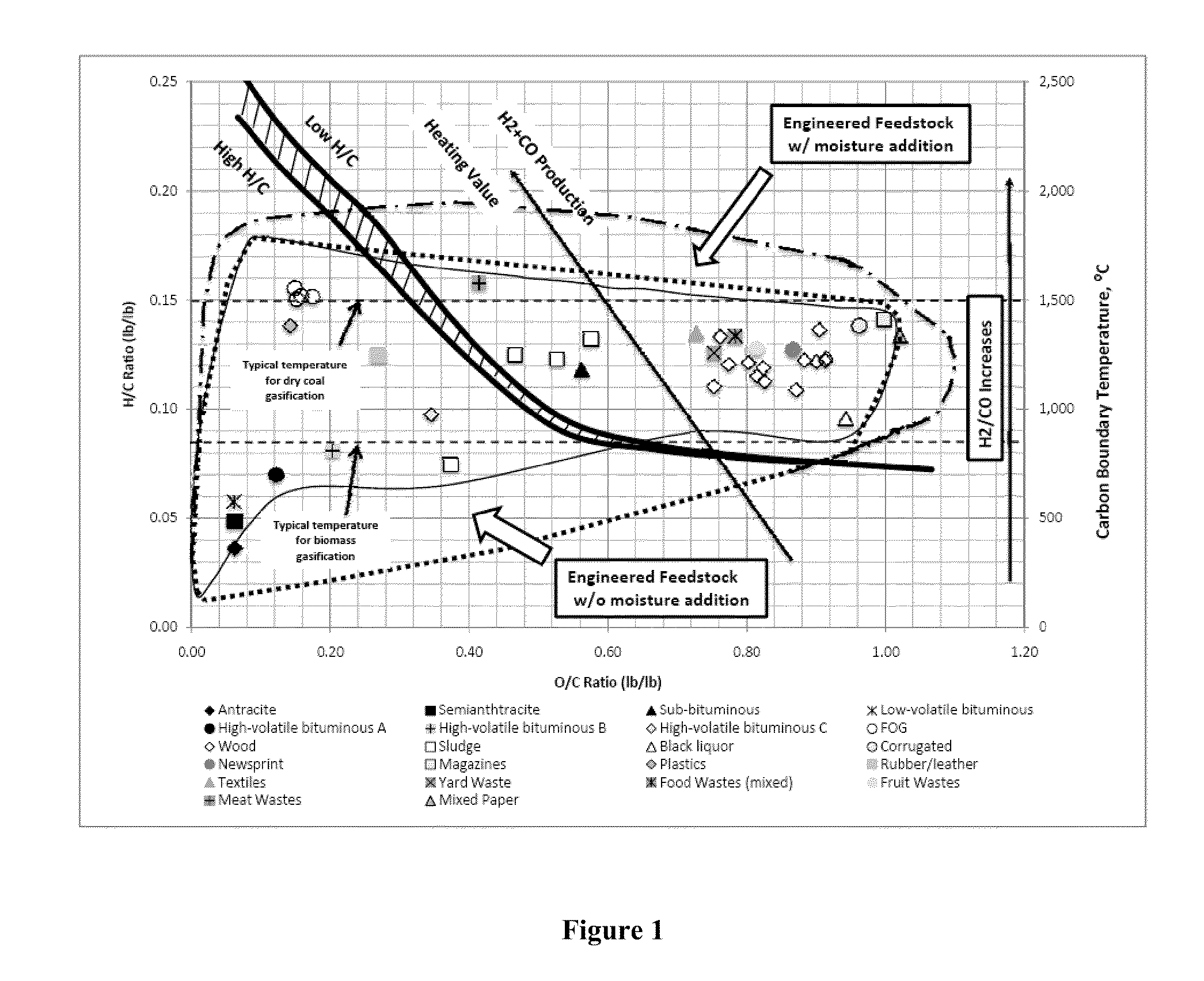Engineered fuel feed stock useful for displacement of coal in coal firing plants
- Summary
- Abstract
- Description
- Claims
- Application Information
AI Technical Summary
Benefits of technology
Problems solved by technology
Method used
Image
Examples
example 1
[0226]
Test MethodASAIRDRYASTM1 #ParameterRECEIVEDDRIEDBASISD 3302,Total Moisture,21.04——5142% wtD 5142Residual Moisture,—7.04—% wtD 5142Ash, % wt12.9115.2016.35D 5142Volatile, % wt58.8169.2474.49CalculationFixed Carbon, % wt7.248.529.16Total100.00100.00100.00D 4239Sulfur %0.180.210.23D 5865HHVBtu / lb (Gross)108901282113792D 3176Hydrogen, % wt4.244.995.37D 3176Carbon, % wt33.8439.8442.86D 3176Nitrogen, % wt0.240.290.31Calculation% Oxygen by27.5532.4234.88difference1American Society for Testing and Materials
example 2
[0227]
Test MethodASAIRDRYASTM1 #ParameterRECEIVEDDRIEDBASISD 3302,Total Moisture,13.26——5142% wtD 5142Residual Moisture,—6.09—% wtD 5142Ash, % wt14.3915.5816.59D 5142Volatile, % wt63.3368.5773.02CalculationFixed Carbon, % wt9.029.7610.40Total100.00100.00100.00D 4239Sulfur %0.200.220.23D 5865HHV Btu / lb (Gross)111651208812872D 3176Hydrogen, % wt5.556.016.40D 3176Carbon, % wt41.6845.1248.05D 3176Nitrogen, % wt0.210.230.24Calculation% Oxygen by24.7126.7528.49difference1American Society for Testing and Materials
example 3
[0228]
Test MethodASAIRDRYASTM1 #ParameterRECEIVEDDRIEDBASISD 3302,Total Moisture, % wt15.06——5142D 5142Residual Moisture, % wt—4.16—D 5142Ash, % wt11.6713.1713.74D 5142Volatile, % wt64.6072.8976.05CalculationFixed Carbon, % wt8.679.7810.21Total100.00100.00100.00D 4239Sulfur %0.090.110.11D 5865HHV Btu / lb (Gross)618869827285D 3176Hydrogen, % wt4.935.565.80D 3176Carbon, % wt34.9039.3841.09D 3176Nitrogen, % wt0.070.080.08Calculation% Oxygen by difference33.2837.5539.18D4208Chlorine, % wt0.750.840.881American Society for Testing and Materials
PUM
 Login to View More
Login to View More Abstract
Description
Claims
Application Information
 Login to View More
Login to View More - R&D
- Intellectual Property
- Life Sciences
- Materials
- Tech Scout
- Unparalleled Data Quality
- Higher Quality Content
- 60% Fewer Hallucinations
Browse by: Latest US Patents, China's latest patents, Technical Efficacy Thesaurus, Application Domain, Technology Topic, Popular Technical Reports.
© 2025 PatSnap. All rights reserved.Legal|Privacy policy|Modern Slavery Act Transparency Statement|Sitemap|About US| Contact US: help@patsnap.com



